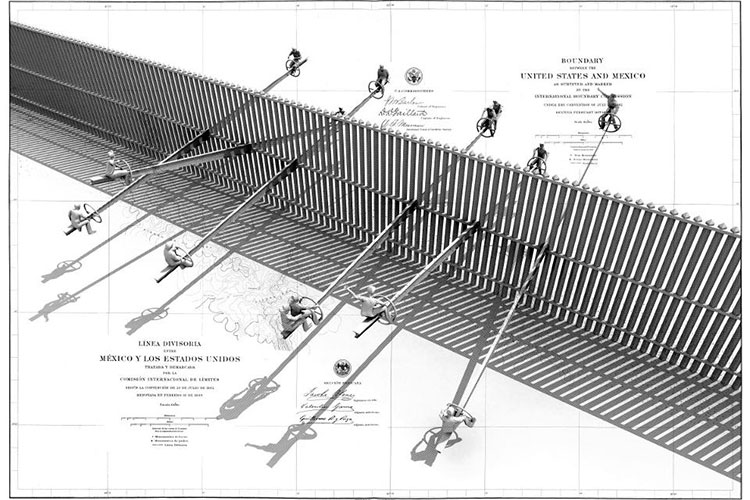Berkeley architect’s border ideas in MOMA exhibit on displacement, shelter
Ideas about the U.S.-Mexico border from Ronald Rael's upcoming book, Borderwall as Architecture are on display through Jan. 22 and are part of the N.Y. museum's permanent collection.

December 22, 2016
Copper plate prints of four architectural plans by Ronald Rael, a UC Berkeley, associate professor of architecture, and his partner, Virginia San Fratello, are featured in the New York Museum of Modern Art exhibit, “Insecurities: Tracing Displacement and Shelter.”

Associate professor of architecture Ronald Rael. (Photo courtesy of the College of Environmental Design)
The prints — “Xylophone Wall,” “Horse Racing Wall,” “Cactus Wall” and “Teeter-Totter Wall” — and two drawings from the “Recuerdos” series in Rael’s upcoming book, Borderwall as Architecture, will be part of MoMA’s permanent collection.
Rael’s border wall ideas use humor and inventiveness to address the futility of building barriers.
The New York Museum of Modern Art describes its exhibit, which runs through Jan. 22, as bringing together projects by architects, designers and artists, working in a range of mediums and scales to respond to the complex circumstances brought about by forced displacement.
It is part of Citizens and Borders, a series of MoMA projects related to works in the museum collection that provide a critical perspective on histories of migration, territory and displacement.
Earlier this year, Rael wrote a column for The Architect’s Newspaper about an architectural competition sponsored by the Third Mind Foundation for the border wall between the United States and Mexico.
“In its current form,” he said, “it reflects the inflexibility of an ancient strategy of a wall as a singular means of security. Instead, it could be reimagined not only as a security measure, but also as a productive infrastructure that contributes positively to a borderland ecosystem, breaking the cycle of violence from where it comes. For example, coupling the wall with a viable infrastructure that focuses on water, renewable energy and urban social infrastructure could be another pathway to security and safety, both in the border communities and the nations beyond them.”

Architecture professor Ronald Rael has written that an international competition around the border wall should elicit ideas from architects to affect the wall’s future landscapes, cultures and bio-ecologies. This is the cover page of the competition brief. (Image via Building the Border Wall)
Rael continued: “Advocating for a reconsideration of the wall at the border is not an endorsement for the construction of more walls, nor should it give wall builders a greater reason for building them. Rather, if design — if architecture — can be smuggled into the creation and re-imagining of the border wall now, it will put into place several very important conditions that will affect the future of the landscapes, cultures and bio-ecologies that it now divides.”
In a summary about his book, Borderwall as Architecture, Rael shares counterproposals for the wall created by his studio that “reimagine, hyperbolize, or question the wall and its construction, cost, performance and meaning.”
He suggests that despite the intended purpose of the wall — to keep people out — it actually serves as a magnet, attracting people living on both sides to engage in a dialogue.
Read more about Rael’s ideas about the border in a 2011 UC Berkeley Public Affairs news release, and watch a related video.